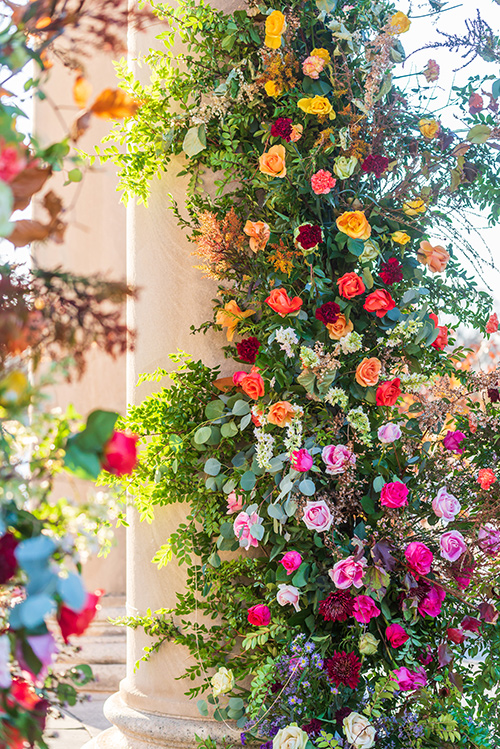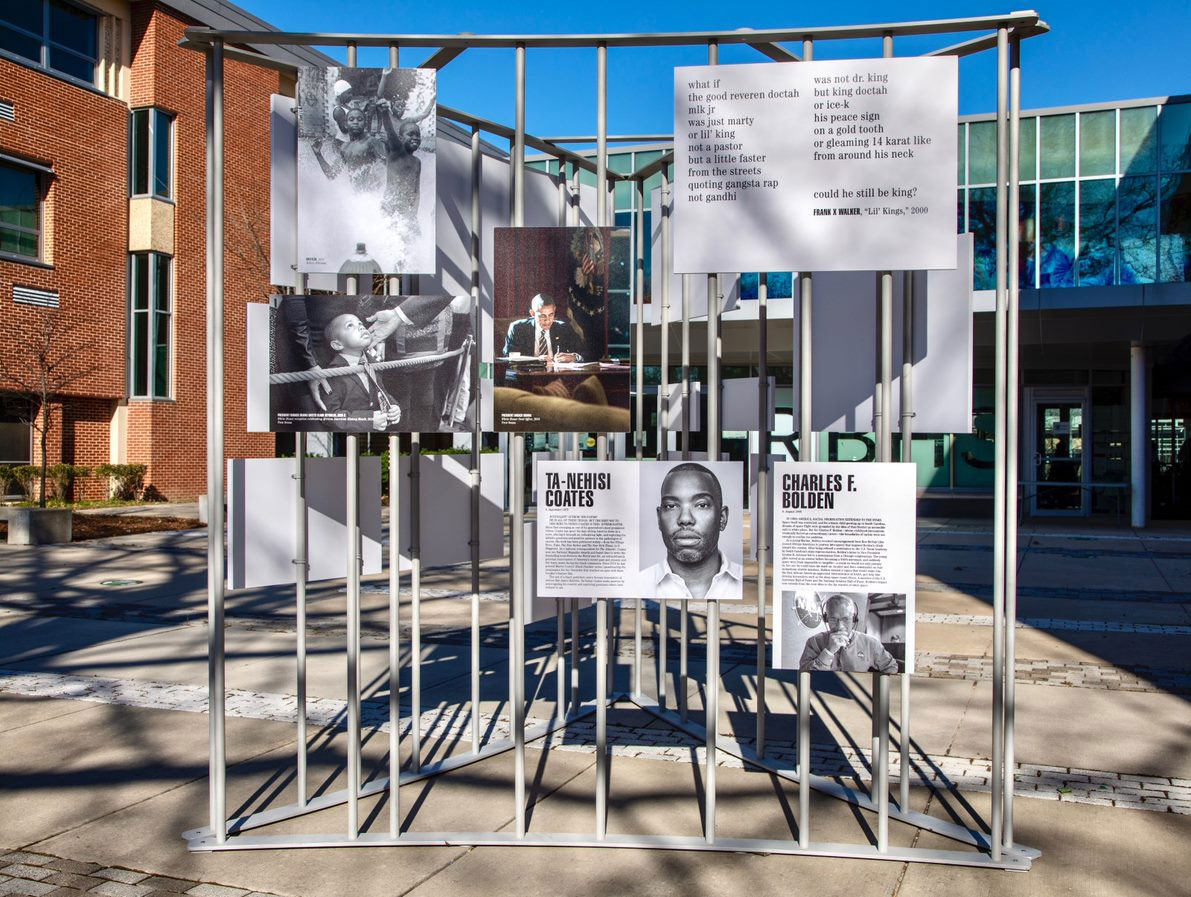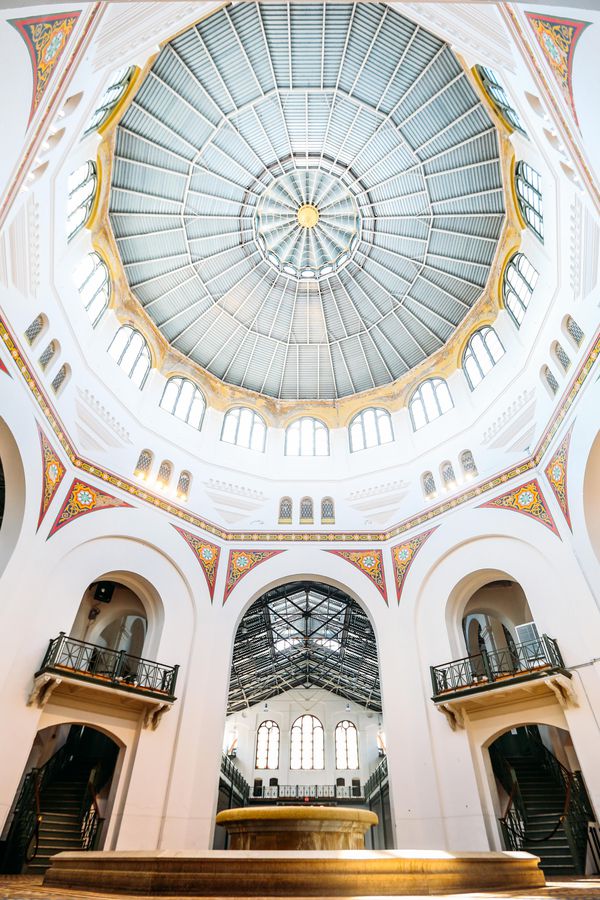This week's edition offers some Smithsonian-style time travel. Shuttle between a look into a museum's treasury of gems that took millions or billions of years to produce and a preview of the spectacular vision of the future that will reopen an iconic building on the National Mall. Along the way, stop and smell the (virtual) flowers as you focus on the natural beauty that inspires both gardeners and designers.
They're among the offerings designed to make sure you continue to enjoy what you,ve come to value from Smithsonian Associates: programs and experiences that are entertaining, informative, eclectic, and insightful.
Compelling Chats
 Roberta Gasbarre (Photo: Amanda Corbett)
Roberta Gasbarre (Photo: Amanda Corbett)
Mark Fridays at Noon on your calendar to savor the liveliest and most interesting conversation you'll hear all week. Designed exclusively for Smithsonian Associates members, this twice-monthly web podcast series invites you to go behind the scenes and into the working lives of some of the most intriguing people from all across the Smithsonian and Washington's worlds of culture, science, and education. Led by Roberta Gasbarre, a multifaceted veteran arts educator and creator (and conversationalist extraordinaire), each informal 30-minute chat offers the perfect break to brighten your Friday and send you into the weekend with new insights from an array of engaging and thought-provoking guests.
Friday at Noon launches March 12 with guest Fredie Adelman, director of Smithsonian Associates. Molly Smith, artistic director of Washington's Arena Stage, joins Roberta on March 19. Members can enjoy the episodes live on Zoom at 12 p.m. ET, or in archived sessions. The programs are free, but registration is required.
Fridays at Noon With Fredie Adelman
Fridays at Noon With Molly Smith
Gardens of Delight

At the turn of the 20th century, the intersection of botanical studies and design stimulated an array of plant forms and motifs in furnishings, glassware, ceramics, textiles, book arts, and jewelry. Nature by Design: Botanical Expressions, an ongoing exhibition at Cooper Hewitt, Smithsonian Design Museum, examines how artists, inspired by nature and informed by scientific knowledge, created vibrant new designs in America, Britain, France, and the Netherlands. Blossoming vases, plantlike structures, fanciful garden illustrations, and a diversity of vegetal and floral patterns reveal how nature and design dynamically merged in works by creators including Christopher Dresser, Emile Gallé, William Morris, and Louis Comfort Tiffany. A collection of online highlights offers close-up looks at some of their beautiful products and the natural inspirations behind them.
Whether they are park-like retreats, centers of research, or incorporate both, botanical gardens are museums with living collections that tell unique stories. In a Smithsonian Associates Streaming series, naturalist Keith Tomlinson surveys some of the most remarkable botanical gardens in the world, covering the history, beauty, and scientific importance of each memorable destination. His Sunday, March 14 program focuses on Marrakech's Majorelle Gardens and Istanbul's Nezahat Botanical Gardens.
Since its first public exhibition in 1829, the Pennsylvania Horticultural Society has introduced new plants, design concepts, and environmental practices to the American public at its annual show. The newest edition of the PHS Philadelphia Flower Show adds another distinction to that history: It's the first to be held outdoors. On Wednesday, May 26-a week before the show opens-a staff member of the society leads a Smithsonian Associates Streaming program that surveys the flower show's history and legacy and covers how the unique 2021 event was organized, provides some inside looks at its features, and offers tips for visitors planning to take it all in.
View the "Nature by Design" Online Exhibit
Beautiful Destinations: Botanical Gardens of the World
The Philadelphia Flower Show: Still Blooming
All That Glitters

Of all the objects in the National Museum of Natural History, its magnificent gems perhaps best provide an intersection of natural science, human history, culture, romance, and artistic skill and creativity-set against the allure of immense value and awesome beauty. In a Tuesday, May 18 Smithsonian Associates Streaming program, Jeffrey Post, curator of the U.S. National Gem and Mineral Collection, reveals the scandals, mysteries, and human stories behind the world's most famous gems, including the Hope Diamond, Carmen LucÃa Ruby, Hooker Emerald, and Blue Heart Diamond. Post draws on his new book The Smithsonian National Gem Collection Unearthed as he shares how these rare and beautiful jewels have come to encapsulate stories about the individuals-from ordinary people to kings, emperors, maharajas, celebrities, and captains of industry-who once owned or were associated with them, for better or worse.
The legendary Hope Diamond is the jewel in the collection's crown, and in a December 2020 appearance on the "Today" show, Post recounted how the fabled stone arrived at the Smithsonian from jeweler Harry Winston in 1958: Through the mail, at a postage cost of $2.44. For one of the gem's previous owners, diamonds were not always a girl's best friend: Marie-Antoinette's demise helped fuel the story that the Hope Diamond is cursed. But though her extravagant tastes as queen were a flaw, there's one role in which she sparkled-as a royal patron with an eye for beauty. Her innovative commissions at Versailles include furniture, decorative objects, paintings, and beautifully staged interior design. Decorative arts historian Stefanie Walker appraises Marie-Antoinette's cultural legacy-and why the myths about her are so enduring-in a Monday, March 15 Smithsonian Associates Streaming program.
The Smithsonian National Gem Collection Unearthed
Watch the Today show Interview
Marie Antoinette at Versailles: Life, Art, and Myth
Men Who Made a Difference

COVID closings haven't deterred visitors from taking in a new offering of the Smithsonian's Anacostia Community Museum. A planned gallery exhibition has been creatively reimagined as Men of Change: Taking it to the Street, an outdoor installation available for viewing 24 hours a day through May 31 on the campus of Ron Brown High School and the Deanwood Community Center in Northeast Washington. The exhibition spotlights two dozen significant African American men including Muhammad Ali, James Baldwin, Ta-Nehisi Coates, W.E.B. DuBois, Duke Ellington, and Kendrick Lamar-as well as less famous but equally revolutionary figures whose journeys have altered the history and culture of the country through politics, sports, science, entertainment, business, and religion. And though you can't take the A train, the site is conveniently near Metro's Deanwood station.
Learn More About the Outdoor Installation
Futures for a Smithsonian Icon
 A view of the AIB rotunda (Farrah Skeiky / AIB)
A view of the AIB rotunda (Farrah Skeiky / AIB)
Celebrating the Smithsonian's 175th anniversary in 2021, the Arts and Industries Building on the National Mall will temporarily open in November for the debut of FUTURES, a massive new exploration of humanity's next chapter. Part exhibition and part festival, it fuses art, technology, design, and history to invite visitors to dream big and imagine not just one, but many possible futures on the horizon. The building-wide exploration is set to feature historic artifacts loaned from Smithsonian museums and other institutions, large-scale installations, artworks, interactive displays, and speculative designs. Plans for FUTURES also include an interactive mobile guide and special events and programming from November through July 2022.
In his announcement of the project, Smithsonian Secretary Lonnie Bunch III noted that the Arts and Industries Building has served many purposes since it opened in 1881: "As the first National Museum of the United States, it was a space that allowed millions to experience first-hand ideas that would change the world: the electric light bulb, the steam engine, and Alexander Graham Bell's telephone. Over the years, [it] has served as an incubator for almost every other Smithsonian museum, debuting everything from dinosaurs to rocket ships. It is only fitting that the Arts and Industries Building now serves as the Smithsonian's catalyst into the future." Smithsonian magazine provides a tantalizing preview of what visitors will find in FUTURES.
One more museum might find its incubator within those soaring Victorian-era exhibition spaces. The Arts and Industries Building is reportedly among the sites being considered as the home of the planned National Museum of the American Latino. The recent appointment of Eduardo Diaz as its interim director brought the long-awaited museum another step closer to being a reality. He shared his thoughts about that institution's future in an NPR Weekend Edition interview.
Watch the Video
Register for the Program